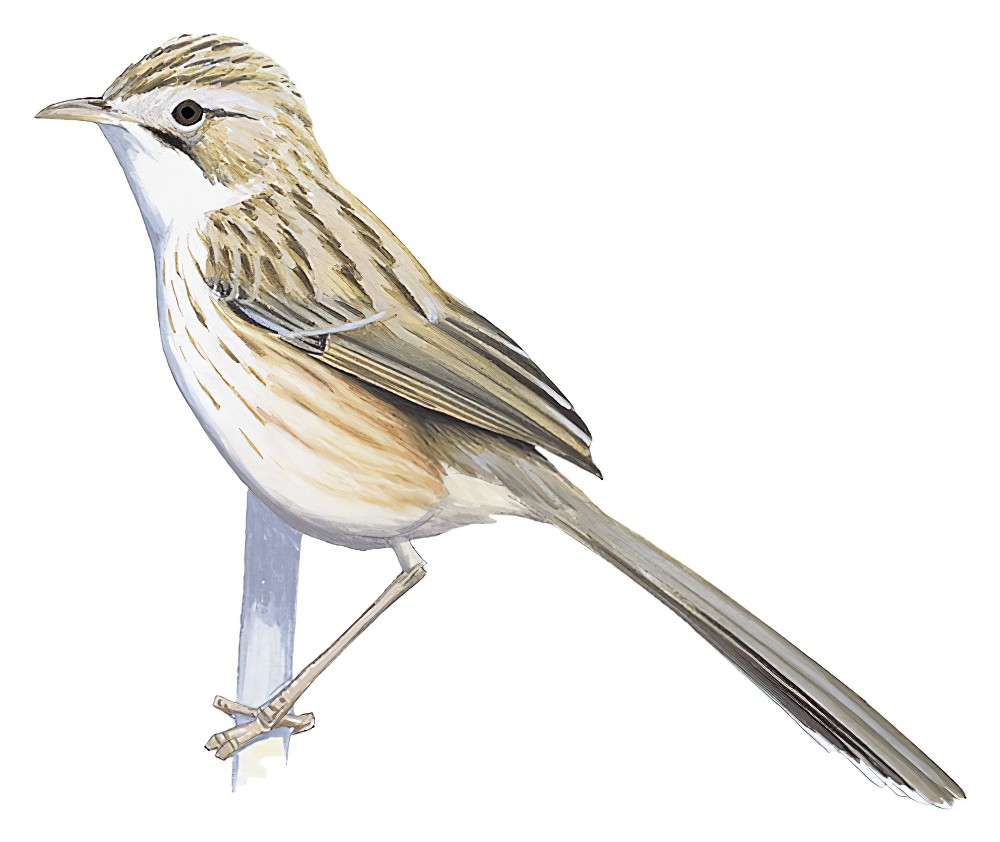Tarim Babbler / Rhopophilus albosuperciliaris

Tarim Babbler
SCI Name:
Protonym: Suya albosuperciliaris Ibis (3) 1 (4) p. 409
Taxonomy: Passeriformes / Sylviidae / Rhopophilus
Taxonomy Code: tarbab1
Type Locality: Koshtak, Yarkand plains, Sinkiang.
Author: Hume
Publish Year: 1871
IUCN Status: Least Concern
DEFINITIONS
RHOPOPHILUS
(Sylviidae; Ϯ Beijing Hill-warbler R. pekinensis) Gr. ῥωψ rhōps, ῥωπος rhōpos bush; φιλος philos lover; "Il sig. Jules VERREAUX ha creduto di ravvisare in essa un Amytis, genere comprendente specie australiane. A noi sembra che essa appartenga alla famiglia dei Timaliidi, e che debba costituire il tipo di un nuovo genere, da essere collocato vicino al genere Laniellus SWS., avendo la D. pekinensis grandissima affinità, non solo nelle forme, ma perfino nel colorito, col Laniellus leucogrammicus TEMM. Pl. col. 592. Proponiamo quindi per esso il nome generico RHOPOPHILUS. (da ῥωψ cespuglio e φιλος amante). La sola specie finora nota di questo genere è il RHOPOPHILUS PEKINENSIS" (Giglioli & Salvadori 1870, Atti R. Ac. Sc. Torino, V (3) (January)); "Drymœca (?) pekinensis. M. Jules Verreaux subsequently proposed that the latter (which is no Drymœca) should be placed in the Australian genus Amytis; but we believe it to form the type of a new genus, which ought to be placed next or near to Laniellus, Swainson, as the so-called Drymœca pekinensis resembles L. leucogrammicus, Temm. (Pl. Col. 582), not only in shape, but also in colour. Thus we propose for it the generic appellation:— RHOPOPHILUS.* The only known species of this new genus is:— RHOPOPHILUS PEKINENSIS; Drymœca? pekinensis, Swinhoe, Ibis, 1868, p. 62. Amytis pekinensis, J. Verreaux, ibid. p. 499. *From ῥωψ, a thicket, and φιλος, loving." (Giglioli & Salvadori 1870, Ibis, ser. 2, VI (April)); "Rhopophilus Giglioli & Salvadori 1870, Atti della Reale Accademia delle Scienze di Torino, V (3), p. 276. Type, by monotypy, Drymoeca? pekinensis Swinhoe." (mihi).
albosuperciliaris / albosupercilliaris
L. albus white; Mod. L. superciliaris eyebrowed < L. supercilium eyebrow.
UPPERCASE: current genus
Uppercase first letter: generic synonym
● and ● See: generic homonyms
lowercase: species and subspecies
●: early names, variants, mispellings
‡: extinct
†: type species
Gr.: ancient Greek
L.: Latin
<: derived from
syn: synonym of
/: separates historical and modern geographic names
ex: based on
TL: type locality
OD: original diagnosis (genus) or original description (species)












